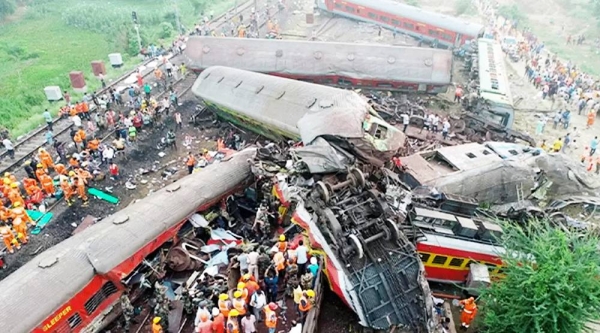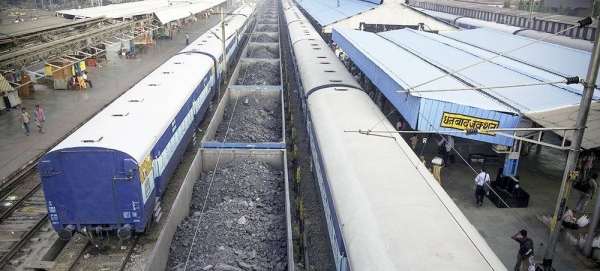
India’s railways minister has said the country’s deadliest train crash in more than two decades was caused by an error in electronic signals that sent a train on to the wrong tracks.
Ashwini Vaishnaw said the full investigation into Friday’s crash in the eastern state of Odisha, which killed at least 275 people and injured more than 1,000, was still under way but “the root cause has been identified”.
According to preliminary findings, a green signal was given to the Coromandel Express train to move forward, at which point the train switched tracks from the main line to the loop line where a stationary freight train, laden with heavy iron ore, was parked.
The impact of the collision, which took place as the Coromandel Express was travelling at 80mph, was momentous. The crash caused the engine and the first four or five coaches to jump the tracks, topple and hit the last two coaches of the Bengaluru-Howrah Superfast Express heading in the opposite direction, causing several carriages of that train to also derail.
Vaishnaw would not confirm if the human error or interference had played a role in the signalling malfunction. “Who has done it and what is the reason will come out of an investigation,” he added. The railways ministry has also sought a criminal investigation into the incident by the Central Bureau of Investigation, a government agency.
Two officials of the Railway Board also confirmed that the train had been given a green signal to proceed down the loop track and had not been over the speed limit at the time of the collision.
Jaya Varma Sinha, a member of the Railway Board, said failure of the track management system was the main focus of investigations. The computer-controlled “interlocking system”, which is in use across the whole railway network, coordinates and controls the signals to oncoming trains.
It is supposed to automatically direct a train to an empty track at the point where two tracks meet, but it appears this did not happen on Friday. Sinha said she had spoken to the driver, who survived the crash, and confirmed he had not jumped a signal.
“It is supposed to be tamper-proof, error-proof. It is called a failsafe system, even if it fails the signal will turn red and the train will be stopped,” said Sinha. “However, as it is being suspected, there was some kind of a problem in the system.”
More than 1,000 rescuers have been working since Friday to locate survivors in the aftermath of the collision. On Sunday, as the operation was completed and all the remaining bodies were pulled from the wreckage, the process began of clearing the mangled carriages and relaying the tracks so service could resume along one of India’s busiest rail routes.
“All bodies have been removed. Our target is to finish the restoration work by Wednesday morning so that trains can start running on this track,” said Vaishnaw as he visited the collision site on Sunday.
The death toll, earlier estimated at 288, was revised down on Sunday after it was found that some bodies had been counted twice, according to a statement by a senior Odisha state official.
Five more bodies were brought to a school being used as a mortuary near the scene of the accident early on Sunday, where health workers struggled to deal with the scale of the decomposing bodies in the hot temperatures. Almost 100 ambulances were deployed to bring the bodies, many of which were mutilated beyond recognition, to hospitals and cold storage facilities in Odisha’s capital, Bhubaneswar, until they were claimed by relatives.
Friday’s incident was the worst since 1995, when two trains collided near Delhi, killing 358 people. The accident has thrown a spotlight on the safety of the Indian railways at a time when the prime minister, Narendra Modi, has spent billions on a sleek modernisation of the British colonial-era railway network, which carries about 13 million passengers daily.
Despite government efforts to improve rail safety, which have brought down fatalities to zero in the past two years, several hundred accidents occur every year on India’s railways, the largest train network under one management in the world, the majority of them due to derailment.
A 2022 railways report into derailments had flagged multiple shortcomings into the laying of new tracks and serious lapses in rail safety, while a much-touted anti-collision programme has only been installed across 2% of India’s railway network.
The opposition Congress party called for Vaishnaw to resign over the incident, accusing the government of “serious deficiencies, criminal negligence and complete disregard for safety and security”.
On Saturday, Modi had pledged that “whoever is found responsible will be given the strongest punishment. They will not be spared.”












